| << Chapter < Page | Chapter >> Page > |
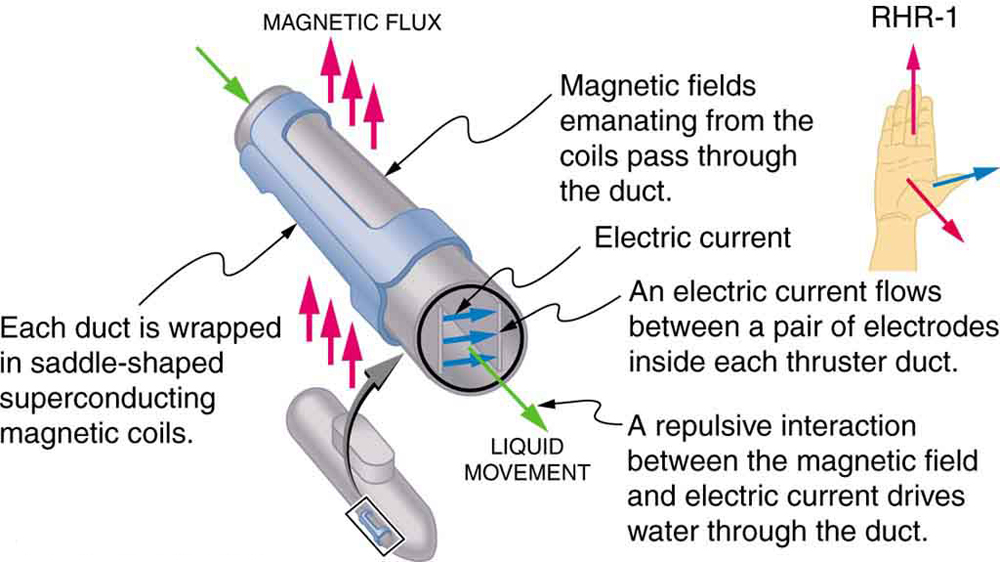
Draw a sketch of the situation in [link] showing the direction of electrons carrying the current, and use RHR-1 to verify the direction of the force on the wire.
Verify that the direction of the force in an MHD drive, such as that in [link] , does not depend on the sign of the charges carrying the current across the fluid.
Why would a magnetohydrodynamic drive work better in ocean water than in fresh water? Also, why would superconducting magnets be desirable?
Which is more likely to interfere with compass readings, AC current in your refrigerator or DC current when you start your car? Explain.
What is the direction of the magnetic force on the current in each of the six cases in [link] ?
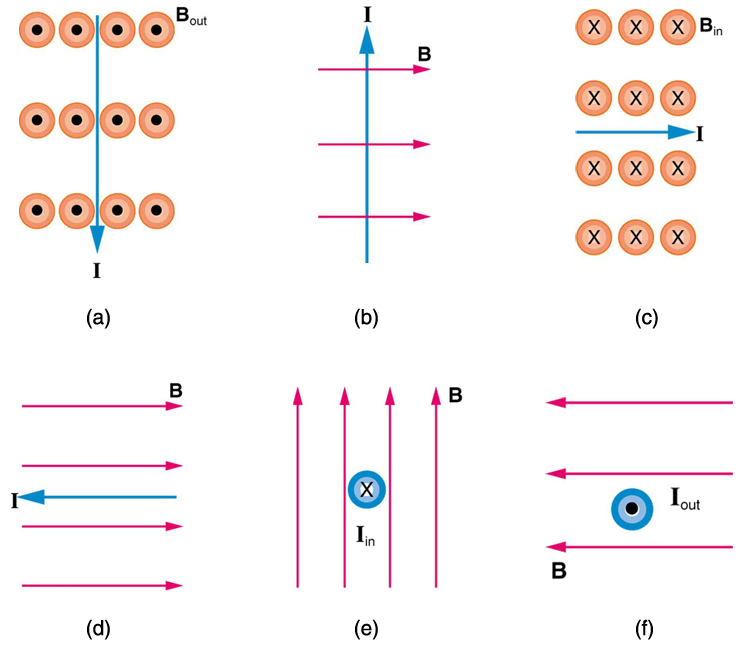
(a) west (left)
(b) into page
(c) north (up)
(d) no force
(e) east (right)
(f) south (down)
What is the direction of a current that experiences the magnetic force shown in each of the three cases in [link] , assuming the current runs perpendicular to ?
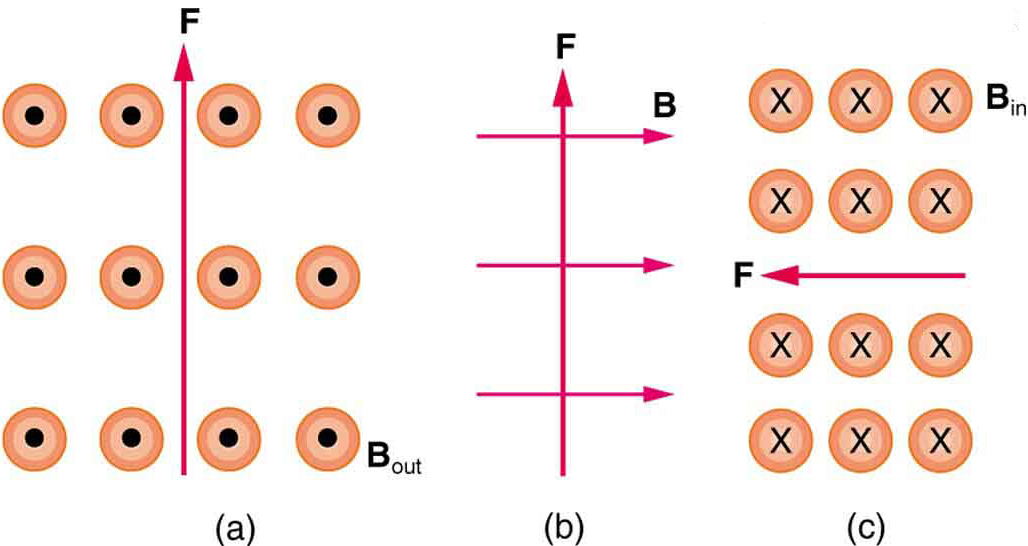
What is the direction of the magnetic field that produces the magnetic force shown on the currents in each of the three cases in [link] , assuming is perpendicular to ?
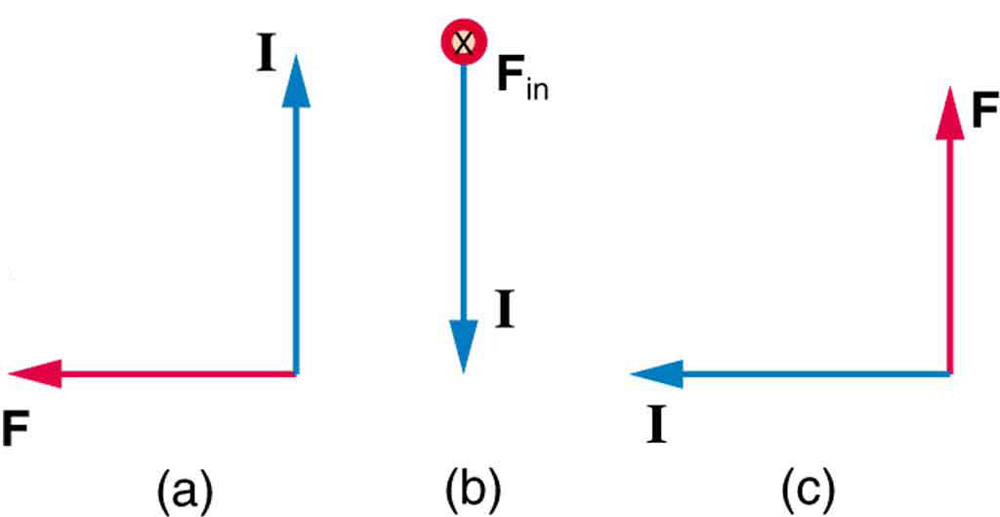
(a) into page
(b) west (left)
(c) out of page
(a) What is the force per meter on a lightning bolt at the equator that carries 20,000 A perpendicular to the Earth’s field? (b) What is the direction of the force if the current is straight up and the Earth’s field direction is due north, parallel to the ground?
(a) A DC power line for a light-rail system carries 1000 A at an angle of to the Earth’s field. What is the force on a 100-m section of this line? (b) Discuss practical concerns this presents, if any.
(a) 2.50 N
(b) This is about half a pound of force per 100 m of wire, which is much less than the weight of the wire itself. Therefore, it does not cause any special concerns.
What force is exerted on the water in an MHD drive utilizing a 25.0-cm-diameter tube, if 100-A current is passed across the tube that is perpendicular to a 2.00-T magnetic field? (The relatively small size of this force indicates the need for very large currents and magnetic fields to make practical MHD drives.)
A wire carrying a 30.0-A current passes between the poles of a strong magnet that is perpendicular to its field and experiences a 2.16-N force on the 4.00 cm of wire in the field. What is the average field strength?
1.80 T
(a) A 0.750-m-long section of cable carrying current to a car starter motor makes an angle of with the Earth’s field. What is the current when the wire experiences a force of ? (b) If you run the wire between the poles of a strong horseshoe magnet, subjecting 5.00 cm of it to a 1.75-T field, what force is exerted on this segment of wire?
(a) What is the angle between a wire carrying an 8.00-A current and the 1.20-T field it is in if 50.0 cm of the wire experiences a magnetic force of 2.40 N? (b) What is the force on the wire if it is rotated to make an angle of with the field?
(a)
(b) 4.80 N
The force on the rectangular loop of wire in the magnetic field in [link] can be used to measure field strength. The field is uniform, and the plane of the loop is perpendicular to the field. (a) What is the direction of the magnetic force on the loop? Justify the claim that the forces on the sides of the loop are equal and opposite, independent of how much of the loop is in the field and do not affect the net force on the loop. (b) If a current of 5.00 A is used, what is the force per tesla on the 20.0-cm-wide loop?
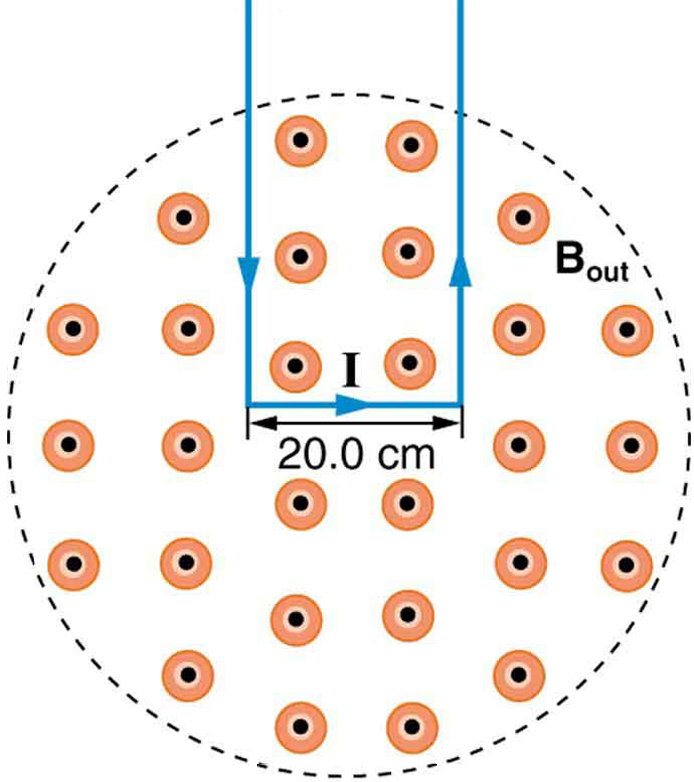

Notification Switch
Would you like to follow the 'College physics' conversation and receive update notifications?